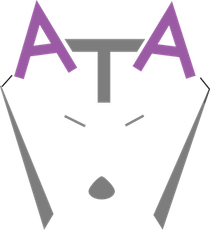Expense Monitoring
Expense monitoring (or expense tracking) involves recording and categorizing your expenditures over time. Sounds simple enough, but putting a strategy and mechanism in place to truly understand your spending from an early stage unveil critical individual pieces of information about what you spend money on to operate your business, and how you can do it better to improve your overall ability to retain your profit and spend it the way you best see fit.
And it doesn’t have to be complicated! In general, we are just talking about establishing a basic set of rules for yourself or your company that provide some clarity to how you are spending money to operate your business. This information not only illuminates the main levers you have to pull to drive your bottom line, but it provides the foundation that allows you to strategize around that knowledge in the future.
Examples of value in strategic expense monitoring:
- Cost of Goods sold vs. operating expenses
All savvy business owners and professionals understand the makeup and general cost of running their business and ultimately bringing forth an income. But not all expenses are alike, and our primary example is cost of goods sold (COGS)*, or cost of sales (COS)*. These are the critical costs that are necessary and directly related to driving sales and bringing in revenue.
For example:
- The cost of the engine in a car would be COGS to the revenue brought in by the sale of that car, because the product could have never been completed and brought to a point of even being sold without a serviceable engine.
- The cost of marketing cars would in contrast be an operating expense – it is not critical to the construction and sale of the car that was sold, but rather supports the sales needs and strategy ultimately decided by the person or company that is selling the product.
Keeping track of COGS and operating expenses separately allows clarity into the spending it takes for you to maintain your revenue, and what it may take to support an increase or decrease in sales.
- Expenses vs. Loan and Debt Servicing
In a lot of situations, not all cash going out the door is an expense. Business can often create a need for loans and debt to structure your cash resources properly. It’s important to know the difference between these outgoing cash transactions and how they affect your overall bottom line, which starts with properly categorizing these transactions in your expense monitoring process.
- Necessary vs. Wasteful Expenses
Quality expense monitoring divides your transactions into operating expense categories and creates a transparency into where your money gets spent to manage your business. Through adding layers of detail to this process and being mindful to track major expenses diligently over time, it becomes easier to identify where you can attempt to reduce your spending, whether to drive higher profit or use those dollars to make your business more efficient in other ways.
- Strategic Budgeting
A budgeting process can often start out as just a basic projection or a simple “rough guess” as to what your spending will be on a particular category in the future. With a quality expense monitoring process, the clarity you have brought forth in your financial history provides a springboard to building a detailed, flexible budget with a true understanding of the costs that are driving your overall financial picture.
ATA Context – The Meat on the Bone
The process you build around expense monitoring for your enterprise is highly personable. It is key to identify the main expense categories and the important details that drive the expenses that fall into those categories.
It’s not about making it fancy or complicated; it is about a repeatable and understandable series of steps that bring forth the important information about your spending and how it ultimately serves your end-goals. And when you pay attention to the pain-staking details early, the rewards you can reap later by leveraging that information are usually much greater than the sum of its parts.


